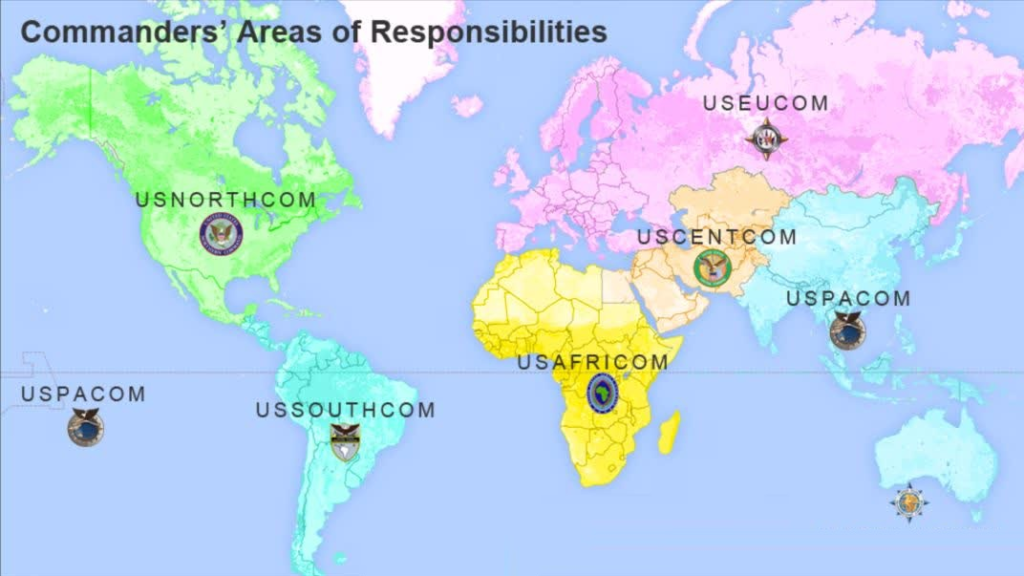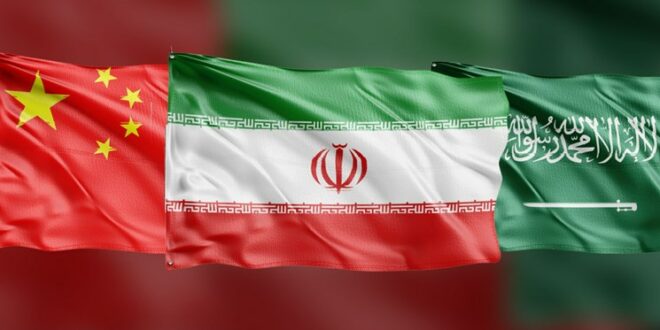Articles: 5 points about the Agreement between Iran and Saudi Arabia in China; Welcome to the post-American era!
The Tehran-Riyadh agreement in Beijing was a political earthquake in international relations; Iran and Saudi Arabia, America’s biggest rival and ally in West Asia, signed an Agreement with China’s mediation without Washington’s intervention. In a way, this action was China’s second major blow to American global hegemony.
Fars Plus; Today’s narration – Iran and Saudi Arabia agreed to resume bilateral relations on March 19 in China. According to this agreement, the embassy of the two countries will be reopened in Tehran and Riyadh after seven years.
Ali Shamkhani, Secretary of Iran’s Supreme National Security Council, and Mosaed bin Mohammad Al-Aiban, Saudi Arabia’s National Security Adviser, signed this agreement as the highest security officials of the two largest West Asian countries. Wang Yi, the Minister of Foreign Affairs and the highest diplomatic official of China, was the mediator of this agreement.

5 points are important in this Agreement
1. China is the biggest trade partner of Iran and Saudi Arabia. China’s trade volume with Iran in 2021 was nearly 15 billion dollars. Since 2020, Saudi Arabia has become China’s largest trading partner in the West Asian region. Trade exchanges between Saudi Arabia and China reached 87.3 billion dollars in 2021. This number means that the volume of Saudi – Chinese trade is almost six times the volume of Iran-China trade. [1]
2. Saudi Arabia is China’s largest source of oil supply and accounts for 18% of Beijing’s total crude oil purchases. On the other hand, according to the 25-year strategic agreement, it has been stipulated that China will invest nearly 500 billion dollars in infrastructure such as railway lines, dry and water ports, agriculture, and industry in our country in exchange for buying Iranian oil. [2]
In addition, Iraq has 10.2%, Oman 8.8%, Kuwait 6.2%, UAE 6.1%, and Qatar 1.7% of China’s oil import cake. Therefore, more than 50% of China’s oil needs are supplied from the Persian Gulf. Based on this issue, the interests of Tehran, Riyadh, and Beijing are safe in the presence of the Persian Gulf.

Main oil exporting countries to China in 2021 Source: World’s Top Exports
3. America can continue in crisis only. The United States Army is divided into 6 Commanders and 7 Naval Fleets (subordinate to the Commander to intervene in all world conflicts). The war in Syria, Iraq, and Yemen in West Asia, the Korean Peninsula crisis and the Taiwan crisis in East Asia, numerous coups in Latin America, the Libyan war in Africa, and the Ukraine war in Eastern Europe are some examples of the US destructive interventions.
The administration in Washington has always been part of one front against another. In the case of the Persian Gulf, the US was able to conclude a $450 billion arms sales contract with Saudi Arabia in the Trump era by means of Iran phobia. The absence of a crisis means a lack of interest in the United States.

Geographical distribution of 6 US military commanders in the world

Geographical location of the 7 active US fleets in the world
China’s foreign policy is the opposite of America’s. Beijing’s strategy is economy-oriented, and security is the main component of achieving this strategy. The security of the Persian Gulf is strategic for Beijing. For this reason, China will be the biggest loser of the conflict between Iran and Saudi Arabia, and America will be the biggest winner.
That is why Beijing called this reconciliation a victory for dialogue and peace. The effects of this agreement will probably be felt in Syria and Yemen shortly. The proof of this claim is the reception of all the countries in the region, including the allies of Iran and Saudi Arabia.
4. This agreement was a political earthquake in international relations. America’s biggest Competitors and allies in West Asia agreed through China (America’s strongest global competitor) without Washington’s intervention. In a way, this action was China’s second major blow to American global hegemony.
The first blow was on 15 November 2020, when the most extensive Free Trade Agreement in the world was formed with the support of China and without the presence of the United States. [3]
This agreement was concluded under the title Regional Comprehensive Economic Partnership (RCEP), which consists of 2.2 billion people and approximately one-third of global economic production, which is 26.2 trillion dollars from the total world production. [4] AFP described this event as China’s great coup. [5]

Members of the Regional Comprehensive Economic Partnership (RCEP)
Qatar’s Al Jazeera wrote about the Iran-Saudi Agreement: China’s attempt to mediate in the Iran-Saudi agreement has been seen by analysts as a broader sign of the change in the world order. [6]
5. The Zionist regime is the biggest loser of the agreement between Iran and Saudi Arabia. Since 2010, this regime was able to change the conflict between the Islamic nation and Zionism into a conflict within the Islamic country. America and NATO also supported it.
In this regard, after the transfer of Israel from USEUCOM (US military command in Europe) to CENTCOM (US military command in West Asia and Central Asia), Tel Aviv sought to establish a military alliance under the title NATO. It was against Iran.
This agreement became a seal of invalidity on the anti-Iranian NATO. Naftali Bennett, the former Prime Minister of the Zionist regime, described this agreement as a fatal blow to the effort to establish regional unity” against Tehran. [7] American news agency Vox also wrote about the agreement between Iran and Saudi Arabia: “Welcome to the post-American era in the Middle East.” [8]
Endnotes:
1. https://www.reuters.com/world/saudi-china-energy-trade-investment-ties-2022-12-06/
2. https://www.farsnews.ir/azarbaijan-sharghi/news/14000109000465
3. https://parsi.euronews.com/2020/11/15/asia-forms-world-biggest-trading-bloc-excludes-us
4.https://www.cnbc.com/2020/11/16/rcep-15-asia-pacific-countries-including-china-sign-worlds-largest-trade-deal.html
5.https://www.radiofarda.com/a/world-s-largest-free-trade-agreement-signed-in-coup-for-china-/30951146.html
6. https://www.aljazeera.com/news/2023/3/11/changing-global-order-china-restores-ties-with-iran-and-saudi
7.https://www.timesofisrael.com/bennett-saudi-iran-deal-a-failure-of-israeli-efforts-to-build-anti-tehran-coalition/
8.https://www.vox.com/world-politics/2023/3/10/23634464/deal-saudi-arabia-iran-china-explained
 Mouood Mouood English Edition
Mouood Mouood English Edition




